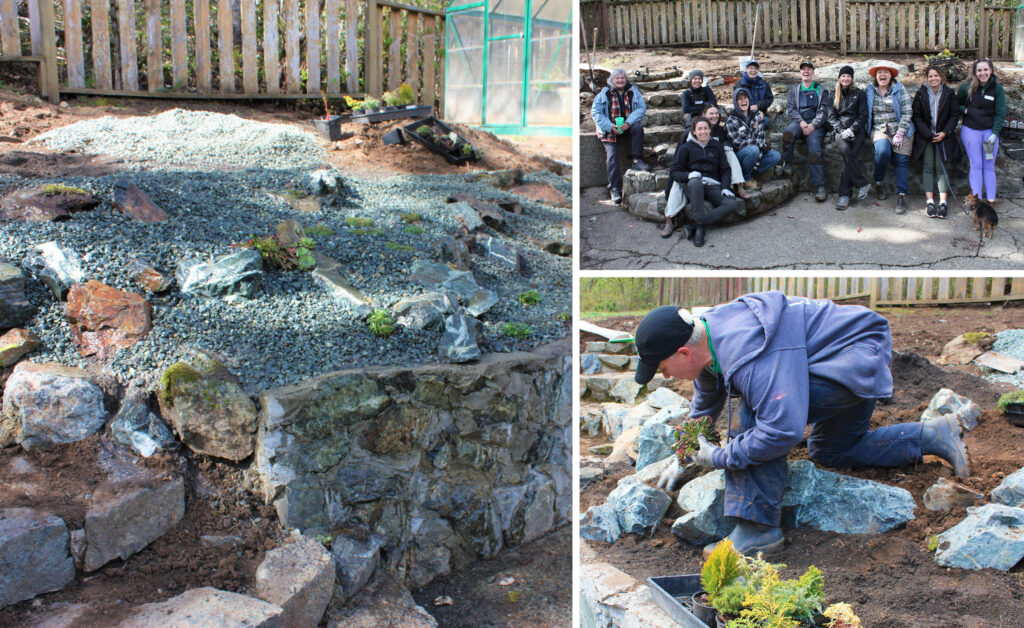story and photos by Cynthia Philp –
I was thrilled to receive an invitation to a seminar on constructing a rock garden from Maria Hendrix, of West Bay Rock Gardens, who arranged the event in honour of International Women’s day. On a blustery March afternoon, a group of women met on the property of Tienna Stempowicz – a new homeowner who was stymied by a steep slope in her backyard. Tienna wanted something that was low maintenance, sensitive to the environmental conditions, beautiful to look at, and was willing to offer up her yard as a teaching garden.
Maria guided us through the steps of building a rocky slope that would retain water where it was needed and direct water away from where it wasn’t. As she easily rolled around small boulders (of locally sourced blast rock), showing us the different facets and possible placements, it occurred to me that I had never quite appreciated the versatility of rocks before.
After the larger rocks were dug into place, we selected smaller rocks which would be strategically placed to build off the terracing already taking shape, as well as creating pockets for planting material. To make a natural-looking slope, it’s best to group similar looking rocks together – but not in a straight line. Even though these smaller rocks were only about a foot across, they were heavy – rock gardening is a fun workout!
A rain-garden blend soil mix was then spread out by eager students. I always love the planting phase of any gardening project, and Maria and Tienna brought a lovely selection of alpine plants to work with.
I was fascinated to learn that purchased alpine plants are almost always rooted in completely inappropriate soil matter – usually a peat mix, which retains too much water for these plants. Watching all the soil be removed from the roots was shocking, but once they were safely and securely tucked into their new homes, I knew that it wouldn’t take long before they established themselves and rewarded Tienna with lovely blooms.
The site still looked like a construction zone when I stood back and surveyed our hard work. Chatting with the other students, I discovered that some were homeowners with similar, challenging yards. This was truly an all-women event – supplies and materials were delivered by women, and one of the attendees works for an all-woman owned and operated landscaping company.
The key to drought-tolerant gardens is using an effective mulch to help retain ground moisture during our dry summers. Maria selected a half-inch crush natural bedrock, which was spread over the soil and tucked carefully around the rocks and plants. Very quickly, the site changed from a raw and unfinished area into a beautifully naturalistic landscape, as if created by Mother Nature herself.
My day out gave me new knowledge of a landscaping technique that’s sensitive to our drought-prone climate and an awareness of how women are not only improving their own yards, but pursuing careers in the industry as well.




